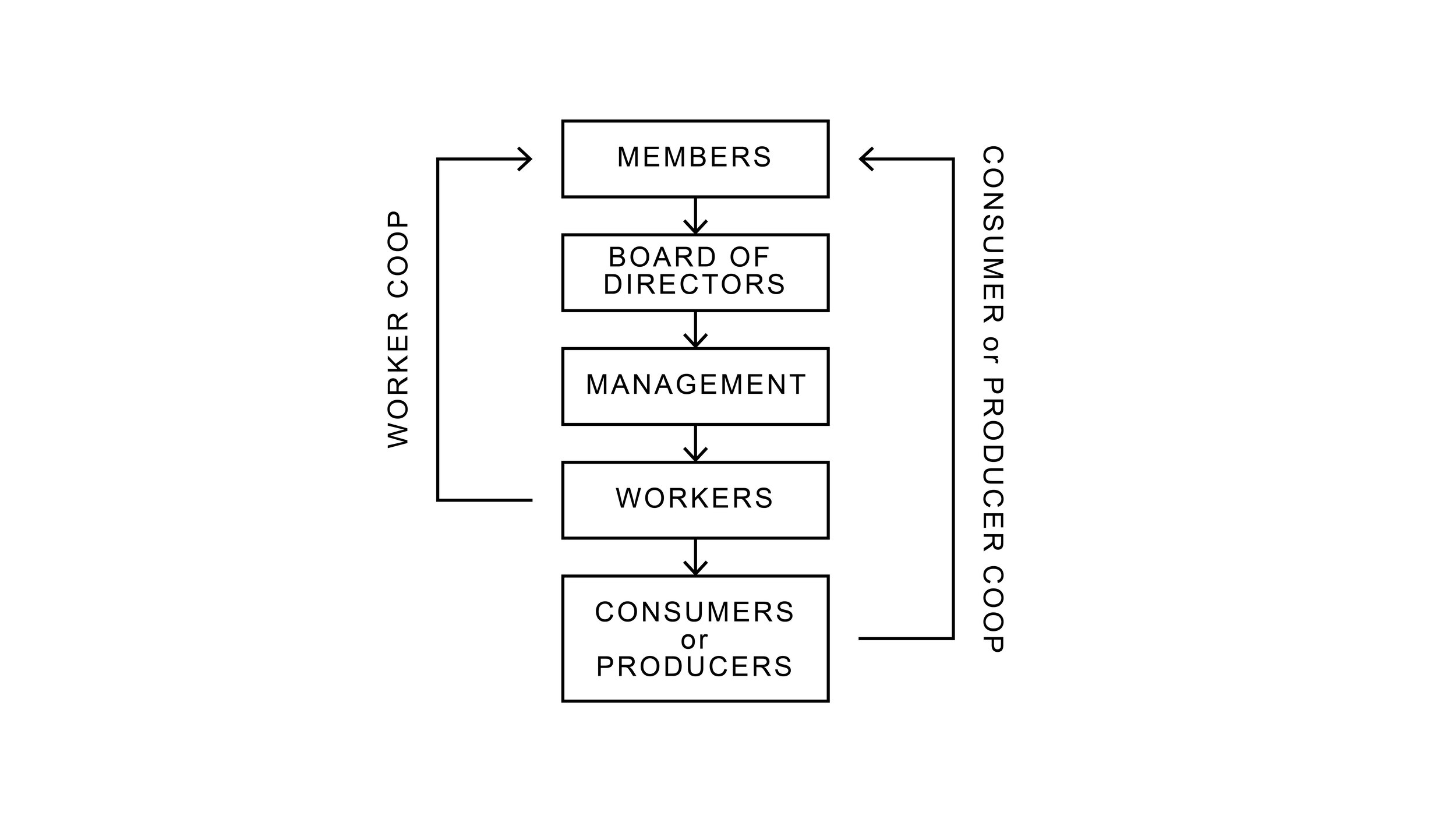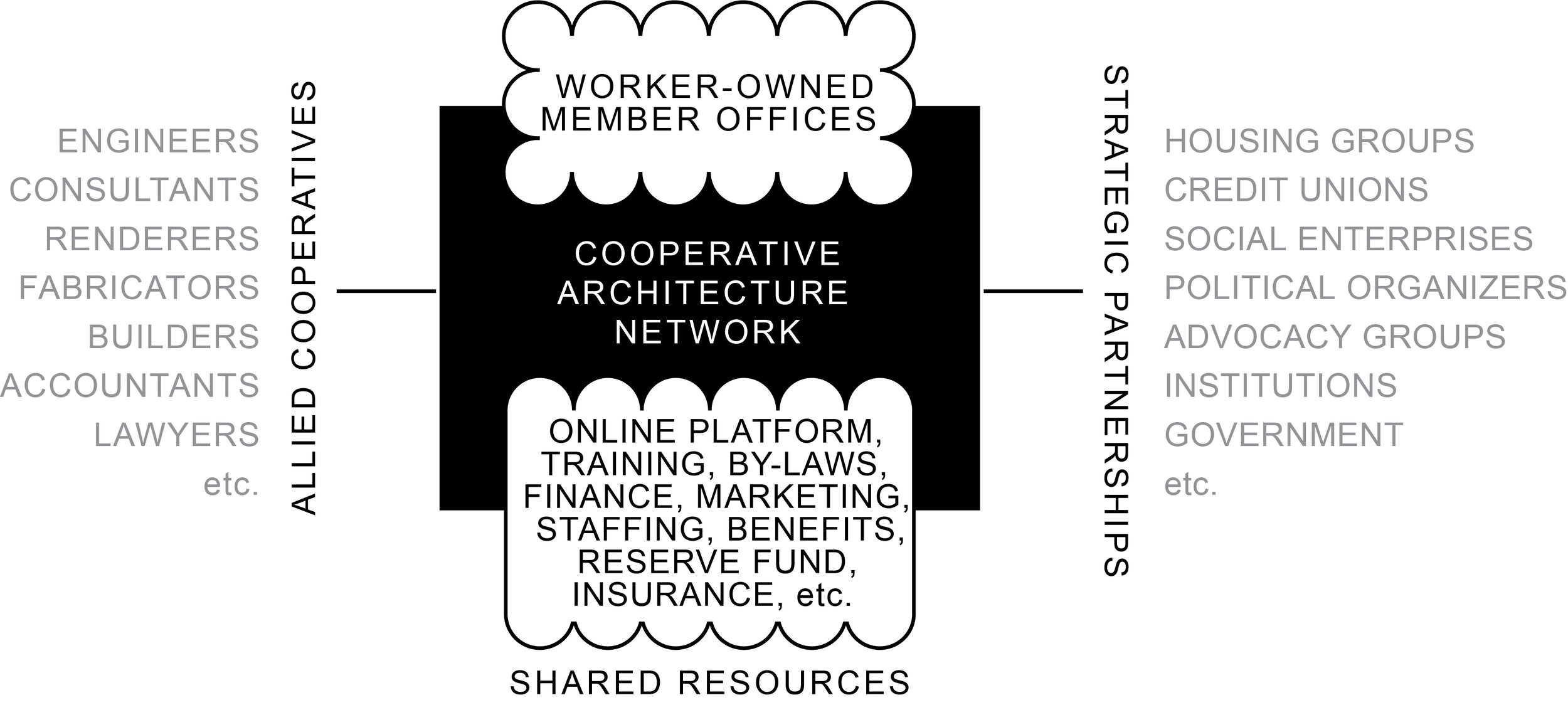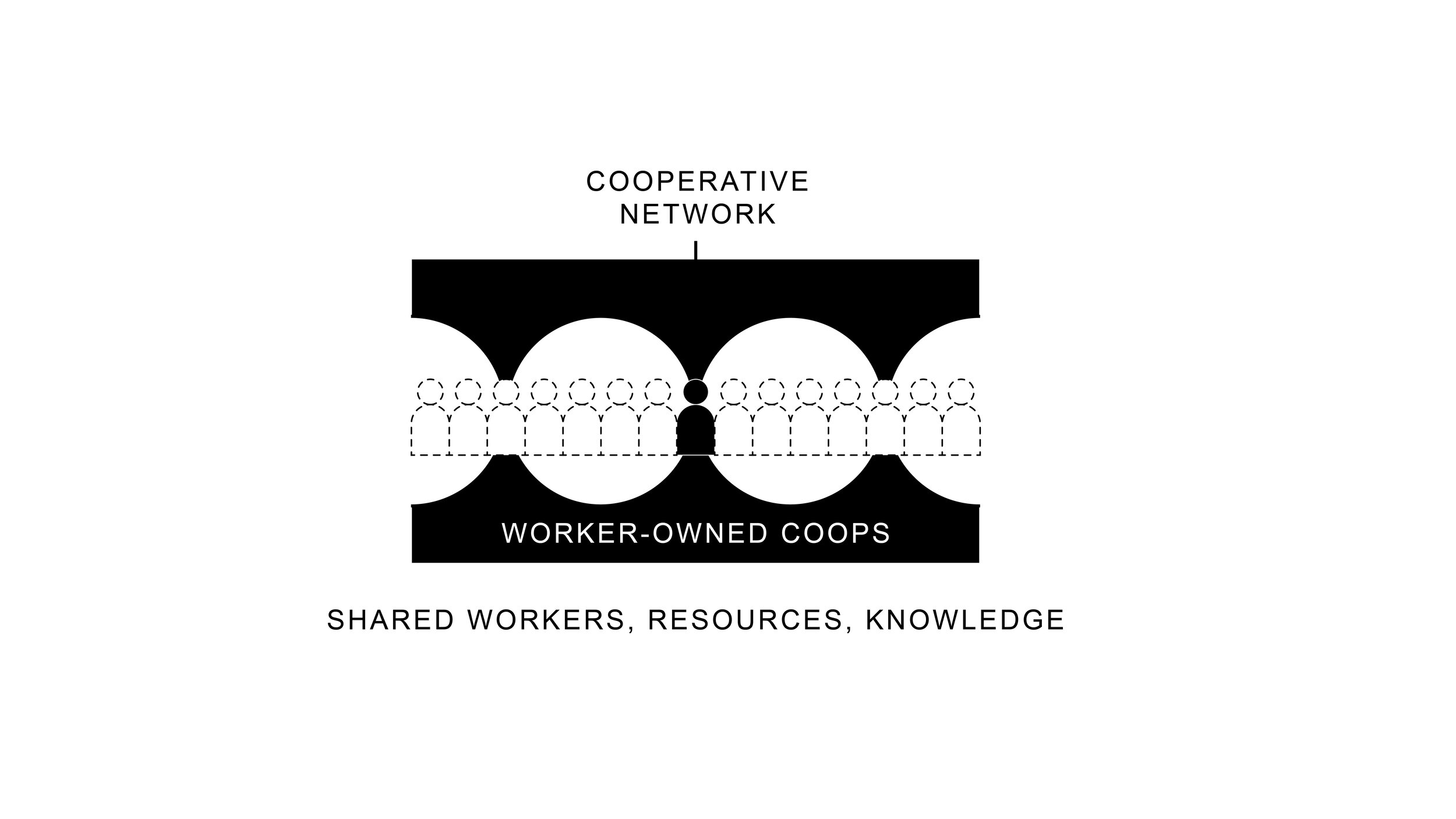FAQ
Do you have questions about cooperatives, cooperative networks, and how architecture can be practiced cooperatively?
See below for answers to some frequently asked questions. You can also take a look at some of The Architecture Lobby Cooperative Network's Research + Writing, or email us your own questions!
What is a worker owned cooperative?
A worker-cooperative is a business structure, similar to a corporation, that is majority worker owned. This means that over half of the individuals working for the business must have an ownership stake. Another fundamental feature of worker-cooperatives is that every owner receives a single vote in decision making processes.
WORKER-OWNED COOPERATIVES = 1 WORKER, 1 SHARE, 1 VOTE
Distributed ownership and democratic governance make worker-cooperatives an incredibly resilient structure that empowers everyone in the workplace to do their best work. Worker-cooperatives are a perfect fit for small architecture practices, where everyone is expected to take on a broad range of responsibilities and collectively shares in the successes and failures of projects.
What is the structure of a worker cooperative?
Each member has (only) one share and one vote, which allows them to:
contribute to and democratically control the financial resources of the cooperative
enact democratic decision-making
agree on the firm’s direction and type of work
agree on the distribution of profits
participate in determining the allocation of work
agree on transparency regarding pay, benefits, and promotions
Sharing can be structured in a number of ways, depending on how horizontal a firm wants to be. But regardless of how sharing is controlled, a management team is elected by every worker-owner and all shares are held by the workforce with no outside owners.
Why join (or start) a worker-owned cooperative?
The ‘one worker, one share, one vote’ structure makes worker coops more equitable than other types of businesses. A worker-owned architectural firm can also have many distinct business advantages:
motivation: having a real stake in the practice means members work hard to support a shared mission
focus: attention is on the work at hand, not frustration of uneven distribution of profits
democracy & trust: replace anxiety & competition
acumen: shared all embedded in the design
The cooperative model works well for succession planning, as older firm owners retire and are looking to transfer ownership in a cooperative, fair manner.
What is a cooperative network?
A cooperative network is an umbrella organization, owned and governed by member firms (sole practitioners, partnerships, and cooperatives). The network provides services in exchange for a membership fee and adherence to shared principles or values.
It’s a simple structure that can have a wide range of benefits:
single payer for bulk purchased goods and services
a liable entity for sharing contracts, construction details, or other sensitive information
a trust for collectively building capital to weather tough times and reinvest in communities.
It’s already common for small architecture practices to share administrative consultants, like bookkeepers, or to share knowledge with trusted firms. A cooperative network enables these specific instances of mutual aid to be expanded to a larger group of practices.
What is the structure of a cooperative network?
In a cooperative network, strategic decisions regarding the distribution of profits and manage management costs are determined by all of the member-owners. Cooperating firms agree to the network by-laws and in return receives a suite of desired practice management tools: payroll management, billing/invoicing, software sharing, model contracts with appropriate metadata and support, and access to non-design professionals, lawyers, etc.
The financial processing is handled by network management. Membership fees cover the cost of participating in and running the network, and the cost of the network is be shared across the member firms according to firm size and use of services. Likewise, a collective reserve, a form of profit appropriation, can ensure that internal capital accounts will be paid in full and external expenses coverable.
Why join a cooperative network?
A cooperative network that allows small firms to share resources, knowledge and workers is a way to support small firms in a competitive, race-to-the-bottom industry. 30% of small firms fail in their first year, 50% fail within the first five years, and 70% fail within the first ten years.
Cooperative networks bring economies of scale. They can exert their “consumer” power by sharing the cost of consultants, insurance, benefits, lawyers, etc., and they can emphasize their ‘producer power by proving to clients their ability to perform beyond their limited size, doing so by highlighting other unique expertise while indicating access to supplementary knowledge.
Workers have the flexibility to move around within the network in times of asymmetric demands, avoiding lay-offs; or when hours are needed for licensing in an area not provided in their home firm.
What are the challenges and legalities of starting a cooperative network?
While a true cooperative network is a cooperative of (truly worker-owned) cooperatives, it can function among firms and/or firm workers that operate in a collective spirit and transparent manner. Legally structuring the network is an exercise in detail and good will. There are regionally organized cooperative support groups for this work, but a good lawyer is necessary too.
How can I find out more about cooperatives in general?
Check out our Resource Network page to find local and national cooperative organizations.
Where can I find more on architectural cooperatives from The Architecture Lobby?
Look at our Research + Writing section, which includes a number of essays, articles, and working documents by the T-A-L Cooperative Network group.
Who is the T-A-L Cooperative Network?
We are a group of firm owners, workers, academics and students within The Architecture Lobby.






